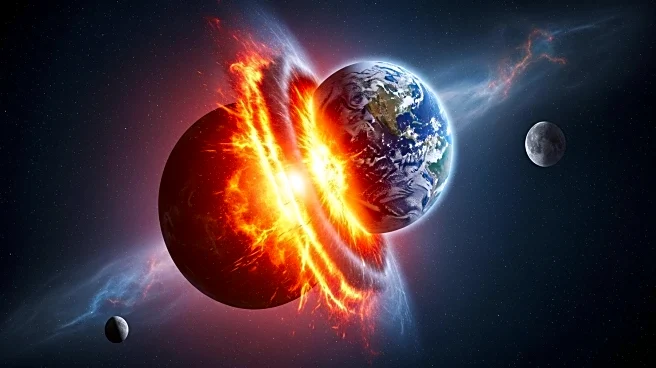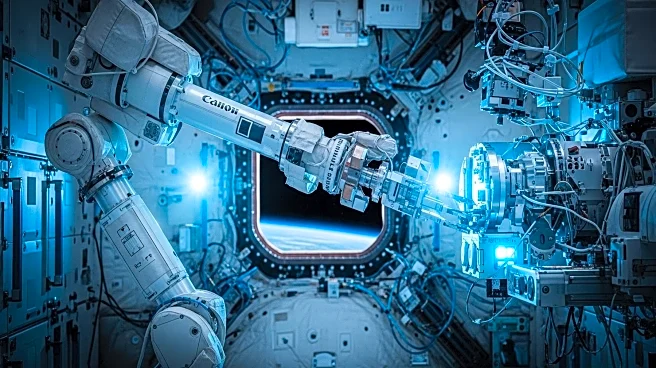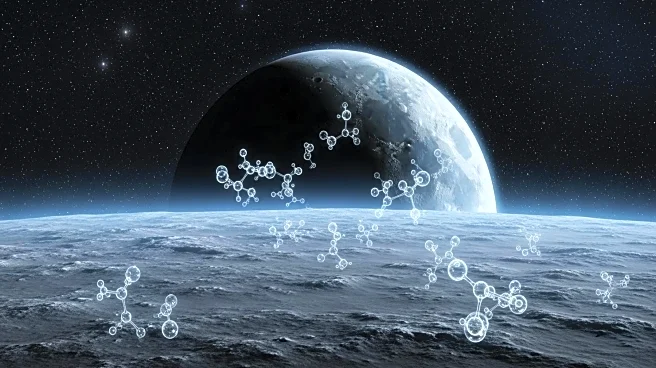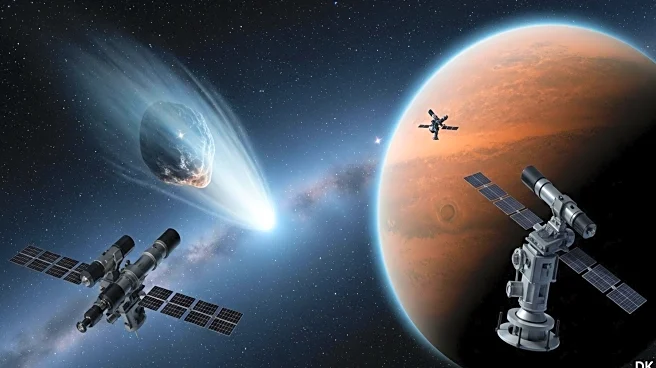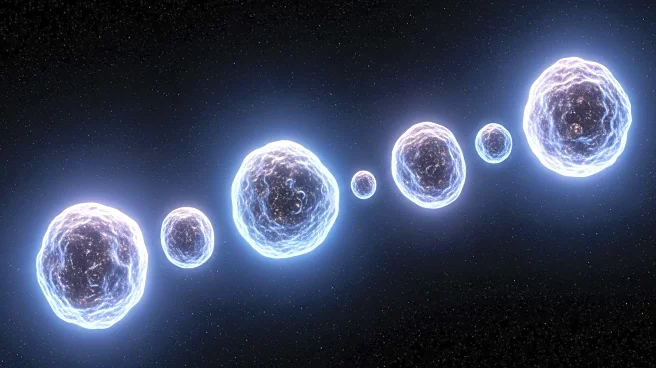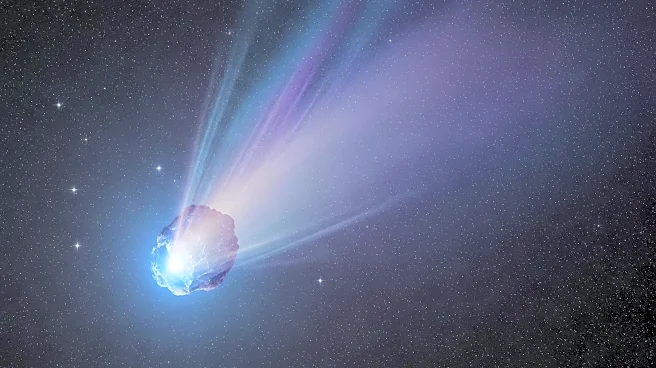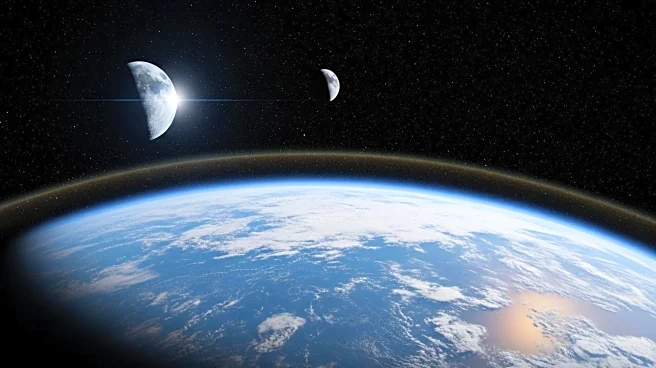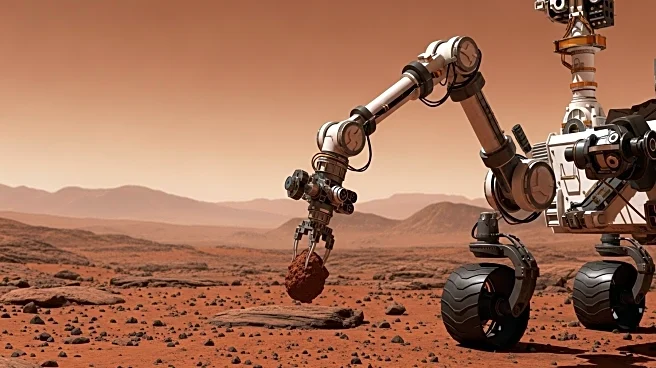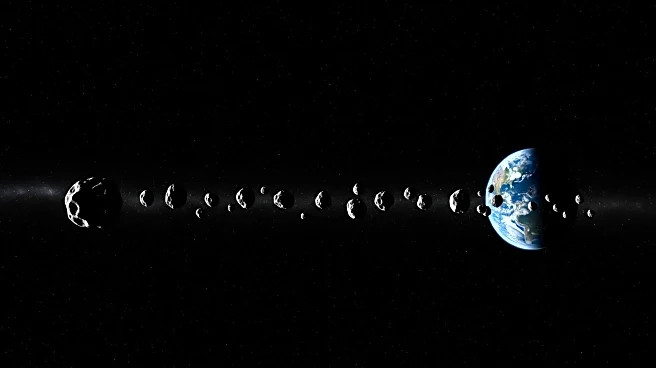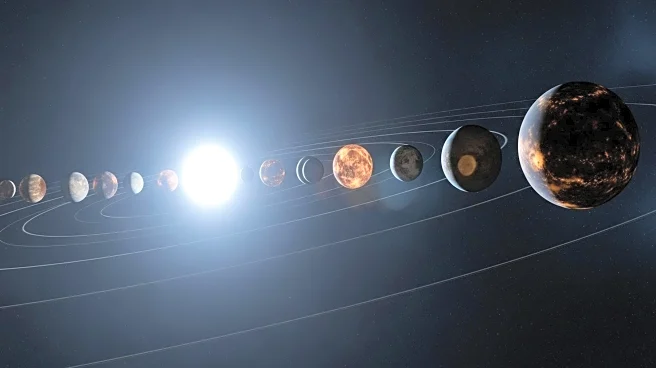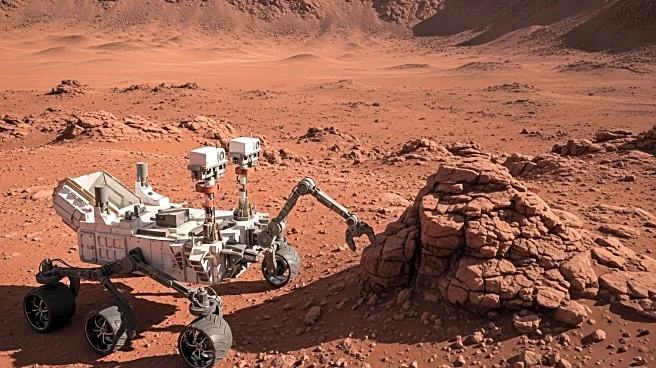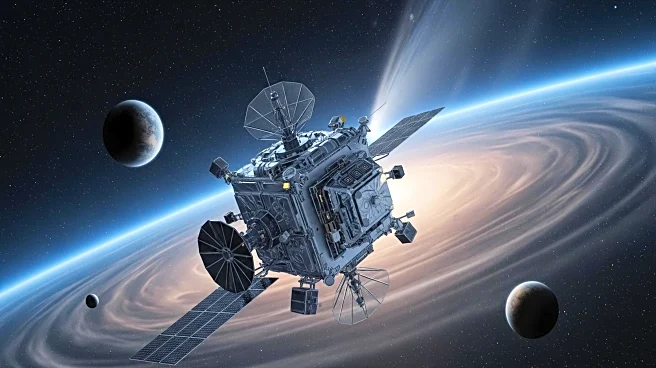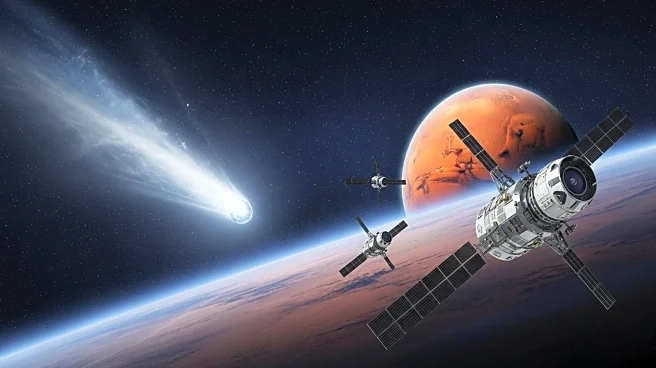What is the story about?
What's Happening?
New research reveals that Earth's collision with Theia 4.5 billion years ago was pivotal in forming the Moon and making life possible. Early Earth lacked volatile organic compounds necessary for life, but the collision with Theia, a Mars-sized body, delivered essential elements like water and carbon. This event reshaped Earth's chemistry, enabling the development of life. Scientists used manganese-53 decay to time Earth's formation, concluding that the planet's fundamental composition was established quickly after the Solar System's birth.
Why It's Important?
Understanding the collision between Earth and Theia provides insights into the origins of life and the formation of the Moon. This event highlights the importance of volatile elements in creating habitable conditions on Earth. The research underscores the role of cosmic events in shaping planetary environments, influencing the development of life. It also offers a framework for studying other planets' potential for habitability, emphasizing the significance of impact events in planetary evolution.
What's Next?
Further research is needed to explore the collision event between Earth and Theia in more detail. Scientists aim to develop models that explain the physical and chemical properties of Earth and the Moon, as well as their isotope signatures. This work will enhance understanding of how volatile-rich impactors contribute to planetary habitability, potentially informing the search for life on other planets.
Beyond the Headlines
The study of Earth's early formation and the impact with Theia raises questions about the conditions necessary for life on other planets. It challenges assumptions about habitability based solely on a planet's location in the habitable zone, emphasizing the importance of impact history and volatile acquisition. This research may influence future explorations of exoplanets and the search for extraterrestrial life.
AI Generated Content
Do you find this article useful?
